Features
By Jacqueline Pumphrey
Researchers led by a team at the Wellcome Centre for Integrative Neuroimaging at the University of Oxford have developed a new framework that binds together the way the brain forms maps of space to the way the brain understands relationships of any kind – general mental maps. The new framework, published in Cell, resolves a decades-old debate on how the same part of the brain, the hippocampus, seems to be important for two seemingly very different functions – how to move around in space and how to remember relational structures like a family tree. The researchers say that they are just two sides of the same coin.
For example, when you watch a romantic comedy, there is always a common structure: 1) character setup, 2) they meet, 3) romance starts, 4) obstacle #1, 5) uncertain journey, 6) obstacle #2, 7) all goes wrong, 8) happy resolution. This structure is the same, irrespective of the exact storyline and characters.
In a similar way, whenever you go into a new house, you know that the house is likely to be set up according to some standard rules: it has rooms that connect with each other, the bedrooms are likely upstairs and the kitchen likely downstairs.
Both houses (relationships in space) and understanding films (relationships in episodes) can be understood in the same way – working out a relational web. This relational web is very useful: knowing a web for houses means you can walk into any house and have a good guess where you might find a bathroom; and knowing a web for romantic comedies means you can turn on the TV and if they’re kissing in the rain it means the film is about to end.
Using this framework of learning relational webs, the researchers built the ‘Tolman-Eichenbaum Machine’ (TEM). This is a deep neural network model named after Edward Tolman and Howard Eichenbaum, two researchers whose ideas influenced this work. Without ever telling it the underlying web, TEM was able to learn the web and use it to its advantage. For example, by seeing several different families, it could learn what a family was i.e. the family tree relation web. When learning about space, the TEM’s neurons behaved exactly numerous neurons that have been recorded in animals over the last few decades (in two areas of the brain associated with memory – the hippocampus and entorhinal cortex) including grid and place cells that allow us to keep track of our position in space.
TEM also makes novel predictions about how neurons behave. Previously it had been thought that place cells are randomly allocated for each new situation. This work, however, says that although the allocations may look random, there is in fact a hidden preserved structure – the relational web of space. This is exactly what they subsequently found when analysing recordings of grid and place cells.
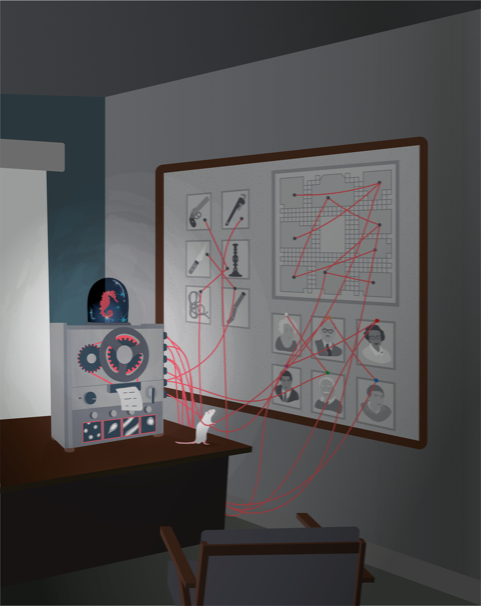
TEM in visual. Image by Gil Costa
Lead researcher, Dr James Whittington, said: ‘There has been lots of confusion over how the hippocampus can do so many apparently unrelated things. This work shows that those apparently unrelated things are actually the same things but seen from different angles. Thinking in this way opened up the possibility to build a mechanistic model to really understand how this part of the brain works.’
A new campaign to make the case for languages has been launched by Oxford Humanities.
Languages are a core part of teaching and research across Oxford University. Our researchers look at languages from many different angles. They teach and study modern and medieval languages, as well as ancient languages like Latin, Greek and Egyptian.
They explore the link between culture and identity in languages like Celtic, and help to keep endangered languages alive in Indonesia. They study how languages developed over millennia, and what that means about our past.
They investigate the evidence for language learning: from their impact on creativity to their benefits for children’s cognitive development. They are at the forefront of understanding the role of language in computer programming, Artificial Intelligence and Machine Learning.
Introducing ‘Talking Languages’
Talking Languages is a new campaign from Oxford Humanities that seeks to tell all of these stories and more. It is hosted on a new Medium site.
Taken together, these stories aim to arm readers with the evidence for why languages are so important. The intended audience is wide and includes schoolchildren and their parents, teachers and heads, employers, and policymakers. The campaign provides an emphatic answer to questions like "why should the UK stay in the Erasmus scheme?” or “is knowing languages useful for my employment prospects?"
The first stories to be published reflect the depth of Oxford’s engagement with languages across its Humanities faculties. They include:
The race to save the Enggano language
We meet Professor Mary Dalrymple (Linguistics, Philology and Phonetics) and hear about her project to save the endangered language of Enggano, which is spoken on an island off the coast of Indonesia. Only 1,500 speakers remain, but Professor Dalrymple’s team is working with the local community to ensure it is learned by the next generation, and preserved for future generations. She and her team say that their project “will allow the data to be preserved for future research and, for the Enggano community and its descendants, as a record of possibly the last generation of fluent Enggano speakers.”
We hear about the words most commonly used by staff and students at Oxford in written reflections about the first lockdown earlier this year. Dr Stuart Lee (English) and his team carried out linguistic analysis on this archive, which will be invaluable for future historians studying the current pandemic. “If we only had photos of lockdown experiences, like you have on Instagram, we would not have a record of how people were thinking and feeling at the time,” he says.
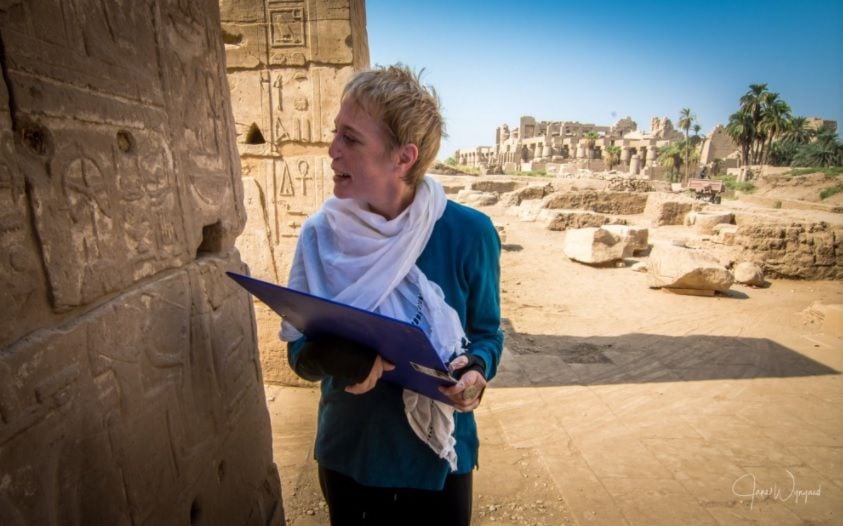 Dr Liz Frood in Egypt (photograph by Jane Wynyard)
Dr Liz Frood in Egypt (photograph by Jane Wynyard)Can classical languages boost children’s cognitive development?
A project led by Dr Arlene Holmes-Henderson (Classics) is on the verge of providing hard evidence for the benefits of teaching Latin and Ancient Greek to primary schoolchildren. The findings, which will be published soon, will feed into the policy networks developing the national curriculum. “Classics education is vastly understudied: we needed to rectify the gap in the evidence base,” says Dr Holmes-Henderson.
Towards a National Language Strategy
Professor Neil Kenny (Modern and Medieval Languages) outlines his campaign with the British Academy to arrest the decline in language learning in schools, and why language learning is more important than ever for Britain’s prospects after Brexit. “We want this to be a strategy that stands the test of time and survives even if it does not attract continuous financial support from governments,” he says.
Nan Gibson, Chief Human Resources Officer at Lidl GB, gives an insight into why employers value language skills so highly. “It is a massive advantage to have language skills, and in order to progress to the most senior levels at Lidl GB you are required to understand German,” she tells us.
In the coming week, several new stories will be released each week. These will include:
- Oxford’s Egyptologists explaining insights into life in ancient Greece that only come from studying the language.
- A Modern Languages professor unpicks the link between multilingualism and creativity.
- A theologian assessing how the use of language by political leaders can affect our behaviour, beliefs and morality.
- Representatives of the British Council and the British Academy unpicking their experiences of campaigning for languages in the national policy arena.
You can follow the campaign on Medium, on Twitter, on the Humanities website, and here on the Arts Blog. We also want to hear from our readers. When were you first exposed to another language? What do languages mean to you? What role should universities like Oxford play in promoting them? Let us know on Twitter or Medium.
We hope you will join us on this journey in the coming weeks.
 Talking Languages is Oxford Humanities' first communications campaign
Talking Languages is Oxford Humanities' first communications campaignThis month Senior Associate of Oxford’s Pembroke College, Leslie Scott, was honoured by her wildly popular invention Jenga being inducted in the US’s National Toy Hall of Fame. Sold in 117 countries across the world and loved by all ages, as a family- and pub-favourite, Jenga is now officially a classic.
Science Blog caught up with Leslie Scott, to find out how the game evolved and why its simple concept keeps people coming back for more.
How did Jenga come into being?
As a game, it evolved amongst my family when we were living in Ghana in the mid-70s. I moved to Oxford a few years later and had a set of these blocks and started to play it as a game. They weren't exactly like the Jenga blocks are now but the principle of the game was there.
I played a lot with friends here in Oxford. But it took a long time for the penny to drop that this didn't exist already as a game. People and children have obviously been piling up blocks of wood for years, but actually to turn that into a game, it just didn't exist.
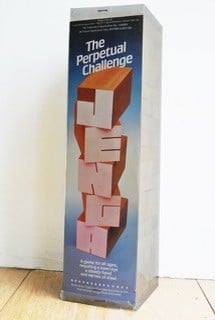
So in 1982, I decided I was going to take this game to market. But that's when the issues started. I knew nothing about the toy industry and nothing about retail business. But I was just so convinced this was going to work.
What are the secrets to Jenga’s success?
Not many people realise this but each one of the blocks in the game are slightly randomly different from each other. And that's absolutely deliberate. Because without that, the game just really doesn't work. If they're all identical it just sits there. So that sort of randomness was a factor of the original, handmade wooden blocks.
I had to figure out how to mass market some of these flaws. Then there was the question of how many actual blocks there should be, plus their size. The original ones were slightly longer than Jenga blocks are now. That meant you couldn't assemble them three by three and make a stable tower to start with - there were gaps between each.
But I figured out that if you made them just slightly shorter you can square it up. So you can start with a fairly stable tower. The decision to go for 54 blocks was trial and error. You start with 18 rows and it just worked - I don't think there was anything more scientific.
How did you scale up production to maintain randomness?
I spoke to a carpenter I knew and asked him how would you do this. He came up with a very clever suggestion, which was to send the planks of wood through a sanding template that was not in itself 100% even. So these planks of wood would go through that template, and then be chopped up into the pieces.
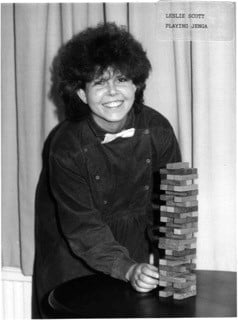
The next stage was introduced by a group of people in Yorkshire at a place called Camphill. It's a sheltered community for adults with learning disabilities and other special needs - it's a movement all around the world. In Yorkshire they have a farm, they've got a dairy, but they also have a woodworking shop.
They had already been making wooden toys, and a person that I knew at Oxfam suggested talking to them. I went up and saw them and asked if they would be interested in doing this for me? And they said, “Yes”, provided that if it became successful, I took it elsewhere to be manufactured because they didn't want to spend the rest of their lives just churning out hundreds and thousands of the wooden blocks!
They came up with this idea of tumble polishing them. When you very lightly tumble polish it puts a nice sheen on them. It smooths the edges, but it doesn't smooth them totally - it introduces another level of slight inconsistency, so it's really clever.
I haven't seen how Hasbro make them now in vast quantities, but I understand it's not that different. This randomness is still built into it. People love playing with wood. There's that tactile element to it, but it's also actually key to the functioning of the game.
What do you think is Jenga’s enduring appeal?
I think it appeals because you can play it with anybody - as long as you've got a certain amount of dexterity. It still seems to require skills, but they're not skills that take a lifetime to learn. And plus, it is never the same. There's nothing inevitable about who's going to win. When you start the game you could make exactly the same moves, but it's not going to end up in the same way because of the randomness.
It's thrilling when you're teetering at 30 layers already. And it's terrifying it when it comes back to you.
Also, I didn't deliberately intend it to be a cooperative game. But if you watch people playing, once the tower gets beyond a certain height, most people end up wanting it to get higher. They really want it to get high, so it becomes almost like a team effort, in a funny way. The excitement comes in trying to get it as high as possible. Nobody deliberately wants it to fall over. So on one hand it could be considered a very competitive game, on the other hand, there’s actually quite surprisingly cooperative play involved. It's thrilling when you're teetering at 30 layers already. And it's terrifying when it comes back to you.
Where did the name Jenga come from?
I grew up speaking Swahili and the word jenga is the imperative form of kujenga, the Swahili verb “to build.” When I first put it on the market, I called it ‘Jenga the perpetual challenge’. And the company that took it on - first of all Irwin in Canada, and then subsequently Hasbro worldwide - hated the word ‘perpetual’. They said Jenga doesn't mean anything and nobody in North America will understand what perpetual means either! So I had a bit of a battle with them and I ended up saying, “Okay, okay, okay, you don't have to call it perpetual.” Even though I actually really meant it – I’d thought about that hard. It is always a challenge. It's not the ultimate challenge, but it's always a challenge. But I have this feeling that by giving up on 'perpetual' I got away with keeping Jenga [laughs].
Do you feel that your childhood influenced the development of Jenga?
I think we should leave children to think and do things for themselves a great deal more than we do now.
When we were kids, the idea that every moment of the day was somehow timetabled wasn’t there. Even at school, there were large, large chunks of time where we literally went out and played, and we were not being supervised for every moment. And, personally, I think we've got the concept of education a wee bit wrong. I mean, I think we should leave children to think and do things for themselves a great deal more than we do now.
If you think about some of the toys that are now produced for children, there's an awful lot that have stories already built into them. I think it's interesting that the National Toy Hall of Fame (which has inducted 74 items), have quite a large number that don't have an inventor as such. There's things like the cardboard box, the stick, marbles. What they're trying to recognise are playthings that have actually contributed to genuine play, playful play.
I think the opportunity to be creative, or the environments in which you can become creative arise when somebody else hasn't told you how to think about something. I don't know how Jenga fits into that, but play is a subject that really interests me.
What is a play – what is a game?
We use terms like “Somebody's got to play the game” or we imply that incredibly serious things are games - like business is a game and life is a game. I think we need to be quite careful how we define what we mean by ‘play’ and make sure that if we are saying, “it's all a game” that at least we actually know what those rules are when we're playing this game. And we know when we're outside of that too.
The thing about a game is that you've agreed to take part in it, it is something voluntary. Secondly, you've got a set of rules that you've agreed that you understand, you're playing by that set of rules, you're playing within a confined space, a delineated area, you're playing for a certain amount of time. So there's a beginning and there's an end to it too.
How do you feel about Jenga entering the National Toy Hall of Fame?
I am thrilled! And I’m honoured and delighted, too, that I am to be included in an upcoming Strong Museum exhibition of women who created a toy or game that became a classic. It’s very exciting.
The National Toy Hall of Fame at The Strong Musuem, was established in 1998 and recognizes toys that have inspired creative play and enjoyed popularity over a sustained period. Each year, the prestigious hall inducts new honorees and showcases both new and historic versions of classic toys beloved by generations. Final selections are made on the advice of historians, educators, and other individuals who exemplify learning, creativity, and discovery through their lives and careers. Toys are celebrated year-round in an exhibit at The Strong museum in Rochester, New York.
For more information about the hall, visit toyhalloffame.org.
It is a well-known fact that one of the things financial markets hate most is uncertainty. There are a lot of other things the market hates, but the ‘devil-they-know’, will almost always be preferable to the one they don’t know, even if the ‘fundamentals’ are not there.
This year, the markets have, by and large, underlined their love for certainty – surging on promises of government support from the US Fed and from Chancellor Rishi Sunak, propelling stock market prices higher, despite the ravages of the pandemic and the anticipated economic fall-out to come.
Whatever bad news emerged, as the virus swept the western world, there seemed no end to share price enthusiasm...towards the end of October, the reckoning finally seemed to have come
Whatever bad news emerged, as the virus swept the western world, there seemed no end to share price enthusiasm. Many observers were perplexed over how long this apparently counter-intuitive bull market could go on, considering the tax rises anticipated to follow. And, towards the end of October, the reckoning finally seemed to have come.
Share prices in London and New York tumbled to their lowest levels since March, when brokers took fright over COVID, before the regulators stepped in with reassurances. So, was this long-awaited end to market ‘madness’? In short, no.
According to the Associate Professor of Finance at Oxford’s Said Business School, Bige Kahraman, last month’s down-tick in share prices was a reflection of that market bête noir: uncertainty.
‘There was a lot of uncertainty prior to the US election,’ she said. ‘In the US, the market was uncertain about what was going to happen and that had an effect on prices.’
Traditionally, on entirely business grounds, the markets have preferred a Republican in the White House. It generally means low taxes and a benign business environment. But that old enemy ‘uncertainty’ trumps everything. And, since the election, the Dow Jones has risen consistently – even more since it became clear that President-elect Joe Biden is heading for Pennsylvania Avenue.
Traditionally, on entirely business grounds, the markets have preferred a Republican in the White House....But that old enemy ‘uncertainty’ trumps everything. And, since the election, the Dow Jones has risen consistently – even more since it became clear that President-elect Joe Biden is heading for Pennsylvania Avenue
Professor Kahraman said, ‘The markets are now back up to pre-COVID levels...the falls in October were just market uncertainty.’
But can this really go on for much longer? Will the reality of COVID economic havoc ever bite for the markets?
‘The indices do not represent the whole economy,’ explained Professor Kahraman. ‘Hard hit firms in the small and medium sectors are not represented in the markets...In fact, many of the really big firms which are represented have done very well recently.’
According to Professor Kahraman, big tech companies now account for some 30% of the equities markets and represent a safe haven for investors, who do not see any returns from interest-bearing accounts. Plus, many ‘tech’ firms have seen revenues going up during the pandemic, even if advertising revenue has gone down for the likes of Facebook and Google.
‘Amazon has worked really well,’ said Professor Kahraman. ‘Its business model is proving more successful than ever.’
The tech firms have emerged as the new ‘blue chip’ investments, ‘safer, whatever the fundamentals’, according to Professor Kahraman. ‘If investors want to put their money somewhere, these tech firms seem unlikely to go down that much.’
But, she said, ‘Prices are inflated right now. In a couple of years, there may be a return to real interest rates and that could have the effect of correcting the market.’
There is no sentimentality in the markets. Professor Kahraman said, ‘The falls were just election uncertainty. With a Democrat elected, the market is relieved, but not celebrating.’
Conventional wisdom has it that too many cooks spoil the broth. But such judiciousness is not usually considered the basis for scientific pronouncements or international rulings on the need to limit the number of people in kitchens. But, when it comes to video games, conventional wisdom, not science, forms the basis for our thinking and even pronouncements from global authorities, according to Professor Andy Przybylski, Director of Research at the Oxford Internet Institute.
The World Health Organisation, no less, weighed into the debate over gaming, pronouncing that ‘Gaming disorder’ is an addictive behaviour and has classified gaming addiction as a disease. Yet, according to Professor Przybylski, there has been no scientific study which takes account of industry data and sentiment – until now. The professor has just completed a formal scientific study into the impact on players of video gaming – Video game play is positively correlated with well-being. And it has some surprising results, which suggest the old wives were wrong, yet again.
The study suggests that experiences of competence and social connection with others through play may contribute to people’s well-being. Indeed, those who derived enjoyment from playing were more likely to report experiencing positive well-being.
The study suggests that experiences of competence and social connection with others through play may contribute to people’s well-being. Indeed, those who derived enjoyment from playing were more likely to report experiencing positive well-being
According to the research, ‘We found a small positive relation between game time and well-being for players of both games. We did not find evidence that this relation was moderated by need satisfactions and motivations. Overall, our findings suggest that regulating video games, on the basis of time, might not bring the benefits many might expect, though the correlational nature of the data limits that conclusion.’
So, stopping gamers from gaming is not necessarily a good thing. But the research is not a universal thumbs up, or perhaps down would be more correct, for a gaming analogy. Professor Przybylski emphasises the team looked at just two games and 3,000 adult players. But the study suggests there is a need to find out if the ‘moral panic’ over gaming is just that.
‘It’s fine to have an opinion about video games,’ says Professor Przybylski. ‘But, without research, you cannot know if this is a real thing or just your own ‘facts’. You can have your own opinion but you cannot have your own facts.’
It’s fine to have an opinion about video games...But, without research, you cannot know if this is a real thing or just your own ‘facts’. You can have your own opinion but you cannot have your own facts
Professor Andy Przybylski
Although games have been with us for the best part of four decades, the Oxford expert says this is the first study of its type, because it draws on data only available to the gaming industry. According to the report, ‘Policymakers urgently require reliable, robust, and credible evidence that illuminates the influences video game may have on global mental health. However, the most important source of data, the objective behaviours of players, are not used in scientific research.’
Contrary to conventional wisdom, using this method, Professor Przybylski’s study shows that the players involved in his study believed they benefitted to some extent from enhanced mental well-being as a result of lengthy games sessions on two specific games, Plants vs. Zombies: Battle for Neighborville and Animal Crossing: New Horizons.
Both are online ‘social’ games, where players engage with others at remote locations, and neither are in the 18+ ‘violent’ category.
Working with ‘blind’ data of gaming time provided by the games manufacturers, Electronic Arts and Nintendo of America, Professor Przybylski’s team surveyed the game players and ‘explored the association between objective game time and well-being, delivering a much-needed exploration of the relation between directly measured play behaviour and subjective mental health’.
The study does not mean, he says, that all video games are ‘good for you’ or that ‘all players benefit’. But, he maintains, his research should be a first step in carrying out a proper scientific study of the impact of gaming on players and their effects over time; he is keen to see more studies follow.
What worries Professor Przybylski is that, earlier this year, in an extraordinary volte face, the WHO’s US ambassador, suggested that young men be given video games, to ensure they stay indoors and comply with the lockdown, thereby limiting the spread of COVID. Wouldn’t this be another leap of logic, to add to the last one? If gaming really is an addition, as the WHO claimed, wouldn’t that be like giving an alcoholic a bottle?
‘This was a serious suggestion....But it’s an unlabelled bottle,’ says Professor Przybylski. ‘We don’t know what’s in it.’
- ‹ previous
- 28 of 247
- next ›

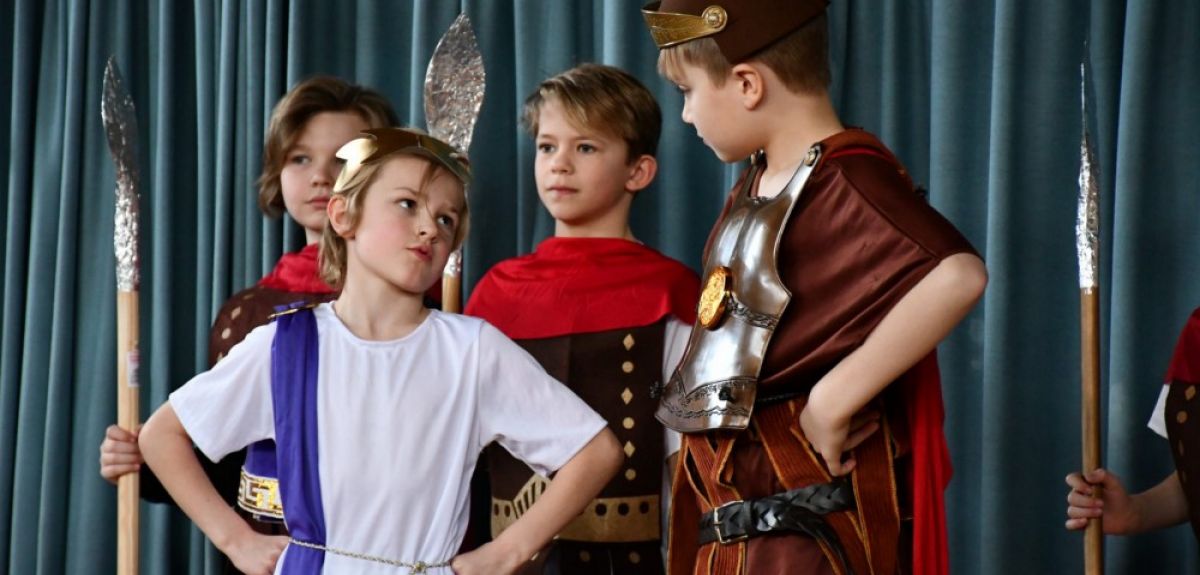
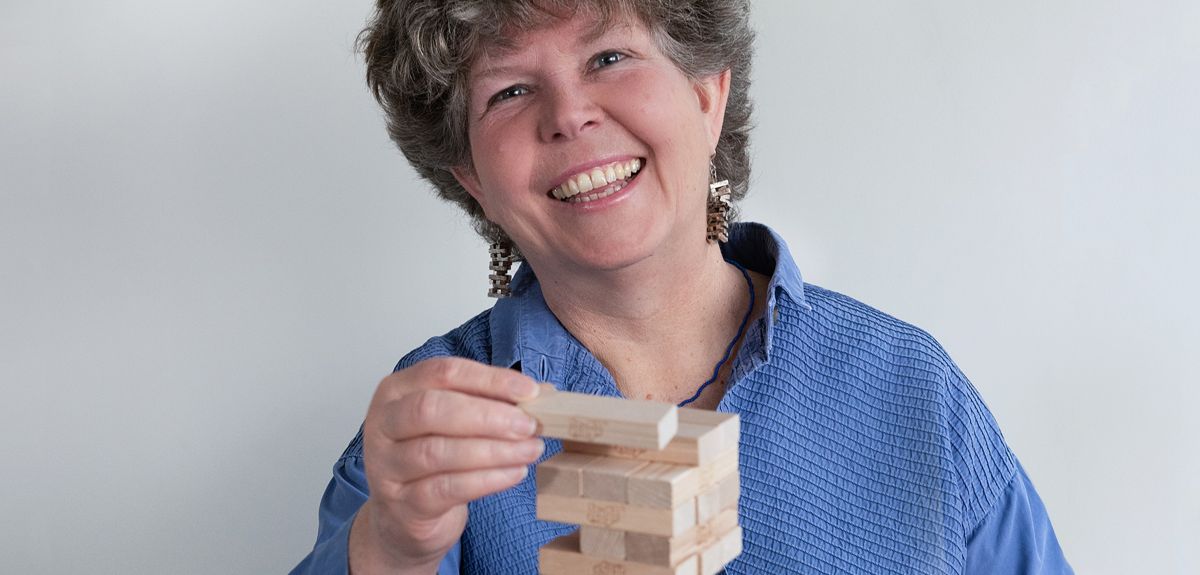

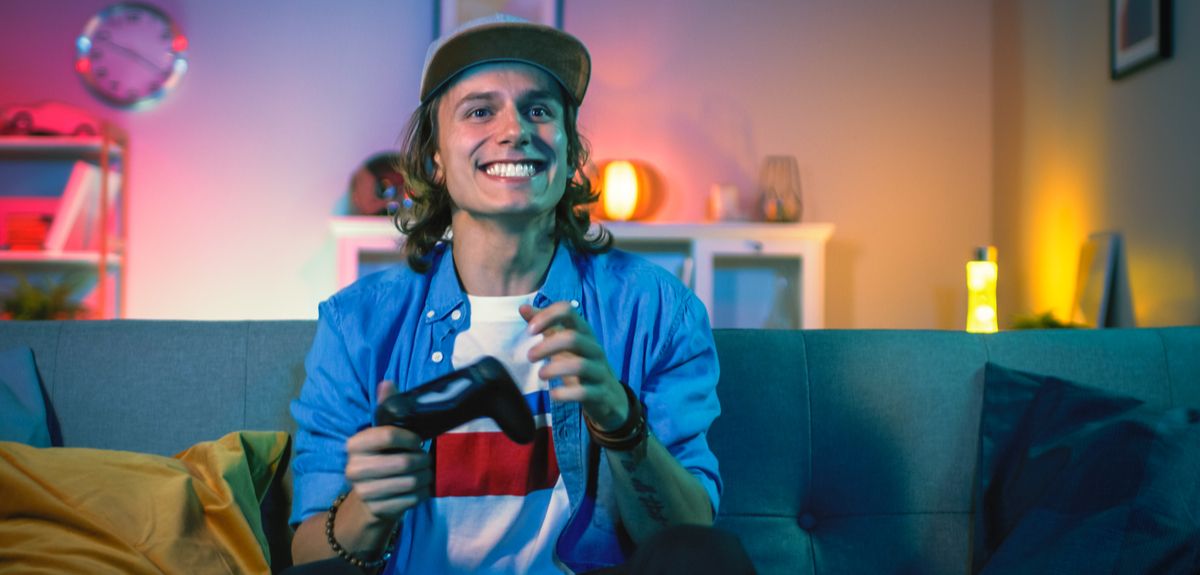
 World Malaria Day 2024: an interview with Professor Philippe Guerin
World Malaria Day 2024: an interview with Professor Philippe Guerin From health policies to clinical practice, research on mental and brain health influences many areas of public life
From health policies to clinical practice, research on mental and brain health influences many areas of public life From research to action: How the Young Lives project is helping to protect girls from child marriage
From research to action: How the Young Lives project is helping to protect girls from child marriage  Can we truly align AI with human values? - Q&A with Brian Christian
Can we truly align AI with human values? - Q&A with Brian Christian  Entering the quantum era
Entering the quantum era Can AI be a force for inclusion?
Can AI be a force for inclusion? AI, automation in the home and its impact on women
AI, automation in the home and its impact on women Inside an Oxford tutorial at the Museum of Natural History
Inside an Oxford tutorial at the Museum of Natural History  Oxford spinout Brainomix is revolutionising stroke care through AI
Oxford spinout Brainomix is revolutionising stroke care through AI Oxford’s first Astrophoria Foundation Year students share their experiences
Oxford’s first Astrophoria Foundation Year students share their experiences